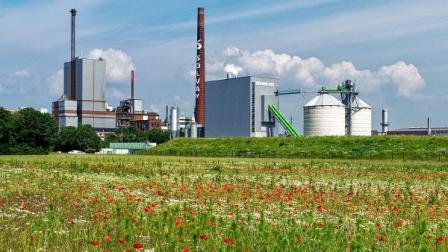The EU needs both sustainability and competitiveness for a resilient future –Philippe Kehren
There are moments in history that mark our progress, propelling us forward. In February of this year, I was present for one of those moments when I joined 73 other industry leaders from 20 different sectors to adopt and sign the Antwerp Declaration for a European Industrial Deal.
This pact calls on the European Commission to tackle the region’s growing threat of deindustrialisation. Today there are more than 1200 signatories. But I fear this alone may not be enough.
Enrico Letta’s recent report on the future of the single market and Mario Draghi’s competitiveness report have warned the EU about slowing economic growth and the potential threat to the prosperity, equity, social welfare and freedom of the people of Europe. I have to agree. We welcome that Europe is focusing on competitiveness and industrial policy. Draghi’s report specifically has put on paper what those of us in the industry have been witnessing for some time now.
Without fundamental changes, the continent is facing a slow decline.
But these reports alone do not fix the issues. We need to see real action by policy-makers that result in an increase in the use of domestic resources and improved supply chain security. This means clear actions to bring down energy costs, increase investments and innovation in Europe, streamline policy cohesion and cut red tape. At the same time, we need to ensure a level playing field with trade partners and reduce dependencies in strategic areas such as rare earths.
Team Work
Just as a team works best when there is collaboration and innovation, it is clear that the EU’s green deal ambitions will work best with a strong industrial deal. What’s more, without an industrial deal that complements the bloc’s sustainability agenda, there is a high risk of destroying the European chemical industry, our primary area here at Solvay. This intersection of environmental responsibility and industrial progress is not just a goal, but a necessity for a competitive industry and the future we envision.
At Solvay, we are ready to work together to revitalise Europe’s industrial landscape, implement the green deal, and seize the opportunities to reinvent our industry. We are actively implementing projects and initiatives that contribute to our own progress as well as working towards the green transition.
For example, late last year we introduced a new technology called e.Solvay for producing soda ash which is a key ingredient for glass and pharmaceutical products. The improvements of this process lead to 50% less carbon dioxide emissions, a 20% reduction in energy, water and salt consumption, and a 30% reduction in limestone use along with significantly less limestone residues.
We are also accelerating our switch to renewable energy sourcing. This shift can be seen in renewable power purchase agreements for our Peroxides business, and a wood-power project at our Rheinberg site in Germany that will reduce its carbon dioxide emissions by 40% and fully phase out its use of coal. We are taking these measures to ensure Solvay’s sustainable growth.
Resetting Opportunities
This is how we see the future at Solvay and for Europe: a future of seizing opportunities. But at the moment we face too many obstacles. High energy prices, inflation, lack of competitiveness and sometimes undue bureaucracy, such as requiring some European industries to account for the carbon dioxide emitted by their customers outside the EU via changes in emissions reporting rules. Such measures could be devastating for Europe.
European Commission president Ursula Von der Leyen has promised to transform Europe with a Clean Industrial Deal, an Industrial Decarbonisation Accelerator Act, strengthening strategic investments and streamlined policy-making and regulation. With the start of the new EU Commission’s five-year term, I hope that Europe uses this moment to reset and seize the opportunity of transforming its industry. We stand ready to do our part for a sustainable and competitive industry that lends itself to a resilient, sustainable and competitive Europe. Together, let’s redefine what is possible.
fDi





















